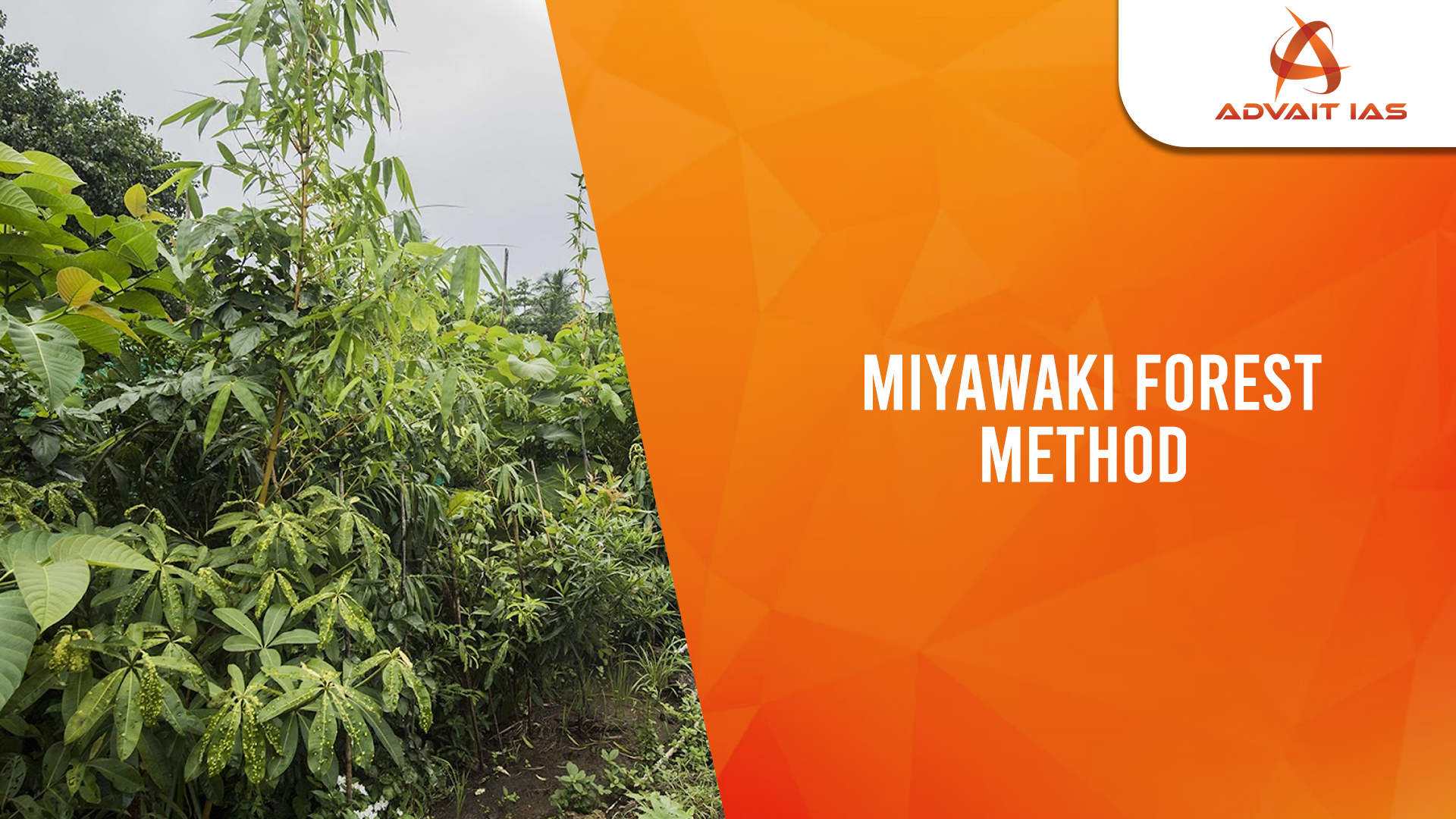Meghalaya is adopting the Miyawaki Forest method for rapid and dense afforestation. This technique is part of a larger afforestation drive by the Soil and Water Conservation Department, Government of Meghalaya.
Miyawaki Forest Initiative
- Origin of the Method:
- Developed by Japanese botanist Akira Miyawaki.
- Involves planting dense clusters of native trees in layers to create self-sustaining mini-forests.
- The methodology was developed in the 1970s, with the basic objective to densify green cover within a small parcel of land.
Key Principles of the Miyawaki Method
- Biodiversity:
- Focus on planting multiple native species close together.
- Encourages natural competition, symbiotic relationships, and formation of a self-sustaining ecosystem.
- Some of the common indigenous plants that are used for these forests include Anjan, Amala, Bel, Arjun and Gunj.
- Dense Planting:
- Trees are planted in high density to ensure quick canopy formation.
- This reduces sunlight to the ground, suppresses weeds, and enhances sapling growth.
- Soil Preparation:
- Soil is enriched with organic matter, nutrients, and beneficial microorganisms.
- Ensures fertile conditions for rapid plant growth.
- Mulching:
- Application of mulch on the forest floor helps in:
- Moisture retention
- Weed suppression
- Improvement in soil fertility
- Application of mulch on the forest floor helps in:
- Regular Maintenance (initial years):
- Watering, weeding, and monitoring are essential in the early years.
- Ensures successful forest establishment and ecosystem stability.
Benefits of the Miyawaki Method
- Rapid Forest Development:
- Forests grow 10x faster, are 30x denser, and support 100x more biodiversity than traditional plantations.
- Trees reach maturity quickly due to efficient soil and planting techniques.
- High Biodiversity:
- Dense planting of diverse native species creates rich habitats for birds, insects, and other wildlife.
- Boosts ecosystem health and resilience.
- Enhanced Carbon Sequestration:
- Dense and fast-growing forests absorb CO₂ efficiently, helping to mitigate climate change.
- Improved Soil Quality:
- Organic soil preparation enhances soil fertility, structure, and microbial activity.
- Reduction in Air and Noise Pollution:
- Acts as natural air purifiers, absorbing pollutants and particulate matter.
- Acts as sound barriers, reducing urban noise pollution.
- Sustainable Water Management:
- Forests act as natural sponges, improving water retention and reducing runoff and pollution.
- Regulation of Surface Temperature:
- Helps counter the urban heat island effect by cooling urban spaces through shading and evapotranspiration.






